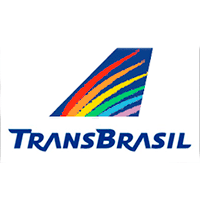
Coming from the supermarket shelf product Sadia, the same from Sadia sausage and Sadia turkey, SADIA was born in 1955. One day Omar Fontana, son of businessman Attílio Fontana, saw a plane fly over Liceu Coração de Jesus High School in São Paulo and in love with what he saw decided to be a pilot and so he was, and watching a Panair plane stopped all day in Congonhas at On weekends, he thought: “I rent this DC3 and transport meat from Concórdia – SC to São Paulo – SP”.
It eventually convinced the family and so the plan to rent the plane proved to be correct and on March 16, 1956, the first aircraft PP-ASJ acquired made SADIA start cargo and passenger services on the Florianopolis – Videira – Joaçaba – Sao Paulo route. SADIA grew fast and in 1961 acquired TAS – Transportes Aéreos Salvador, culminating in 53 cities served, fifteen DC-3 and eleven C-46 in the fleet.
Omar had always been a visionary since the founding of the company, bringing in 1963 an English twin-engine called Handley Page Dart Herald for 50 passengers. And this plane was the big star in the 60s, until the arrival of the first BAC One-Eleven in 1970.
The 70s brought news to SADIA, which changed its headquarters to Brasilia, changed its name to TRANSBRASIL and started to have different colors in its painting, quite a change, it colored the skies, definitely appeared in a scenario where famous companies had been closed. over the years as NAB, LLOYD, PANAIR and REAL. In 1973 TRANSBRASIL bet on Embraer by introducing in its routes the EMB110 Bandeirante and tried unsuccessfully to acquire 2 Airbus A300 for its fleet, tried in 1975 to buy the CRUZEIRO but was also unsuccessful. Still in the 70’s, TRANSBRASIL decided to change its fleet by standardizing with Boeing 727-100 aircraft, of which it operated 19 at the same time, the largest fleet of its kind in South America.
In 1979, before entering the 1980s, TRANSBRASIL was the first to eliminate strips along the fuselage, and with an all-white fuselage it drew attention by its tail: A RAINBOW. The implantation of the rainbow was curious, because the idea of merging the colors as we see the sky, did not work, being a fiasco, until the transition with subbands between the colors, gave a perfect identity and so on.
The 80’s began with a disaster, on April 12, 1980 the Boeing 727-100 PT-TYS crashed into a hill while approaching landing in Florianopolis, taking the lives of 54 people. But the joy would come back to the colorful company when it hosted the June 3, the 3 Boeing 767-200, a plane so new at the time, that Boeing used the PT-TAA demonstration at Le Bourget.
In 1986 he brought what he dubbed the Baby-Boeing 737-300, with which he began a gradual withdrawal of the 727-100 from the fleet. In 1988 would reach 737-400, but Omar in the relentless defense for his company ended up being retaliated by the government that implemented an intervention in the company, the government action only tore the company’s assets. The intervention sold much of its own fleet and the company returned in 1989 to Omar, at a time when the tragedy would shake the company again with the loss of a Boeing 707-300 PT-TCS in Guarulhos killing 22 people (3 crew and 19 residents around the airport).
In the 1990s, TRANSBRASIL and VASP broke VARIG’s monopoly with the permission to fly international routes and bet on the Boeing 767-300. The youngest fleet in Brazil then flew 737-300 / 400 and 767-200 / 300. But Omar was no longer the same, and the company so focused on flying overseas allowed the daring TAM and VASP policy (already in Canhedo’s hands) to dominate the domestic market, reducing the share of the colorful company.
Market errors led international flights to require occupations greater than 100% to reach break-even point. International flights dilapidated its assets, its cash and to make the company worse lost its founder, because with serious health problems Omar was leaving the day to day of the company. Earlier, in 1995, TRANSBRASIL acquired six Embraer 120 Brasília and created INTERBRASIL, the regional subsidiary that fed TRANSBRASIL flights.
Omar dreamed his whole life for the year 2000, the new millennium and so on December 7, 2000, died, being honored by a 767-300 who made beautiful passages over the cemetery in which he was buried. The already battered company decided to “follow” its creator and mentor… with its ever-shrinking fleet and severe management problems, without losing sight of TRANSBRASIL aircraft and shrinking until it had only 5 Boeing 737-300 and 4 Embraer 120 in operating condition. INTERBRASIL in a mesh entirely concentrated in GUARULHOS (until the air bridge had been left aside).
The pioneer trio of 767-200 were no longer able to fly and were standing in the giant hangar of Brasilia-DF. By December 3, 2001, the market was already seeing the daring of GOL, an apathetic VASP, and saw the fleet’s 737-300 land in Congonhas when the company’s mesh had changed as a last attempt to keep flying, but it dawned. December 2001 and no aircraft left the ground, there was no fuel although they said they would fly again soon, which obviously did not happen and TRANSBRASIL became a page of a colorful story that ended in grayscale.
Their leased planes were taken over and directed to VARIG and abroad, and only a few INTERBRASIL EMB120s and the 767-200 trio remained in Brazil, a portrait to date in CGH and BSB of what was once one of Brazil’s most admired and friendly companies. , which ended 362 days after its founder…
